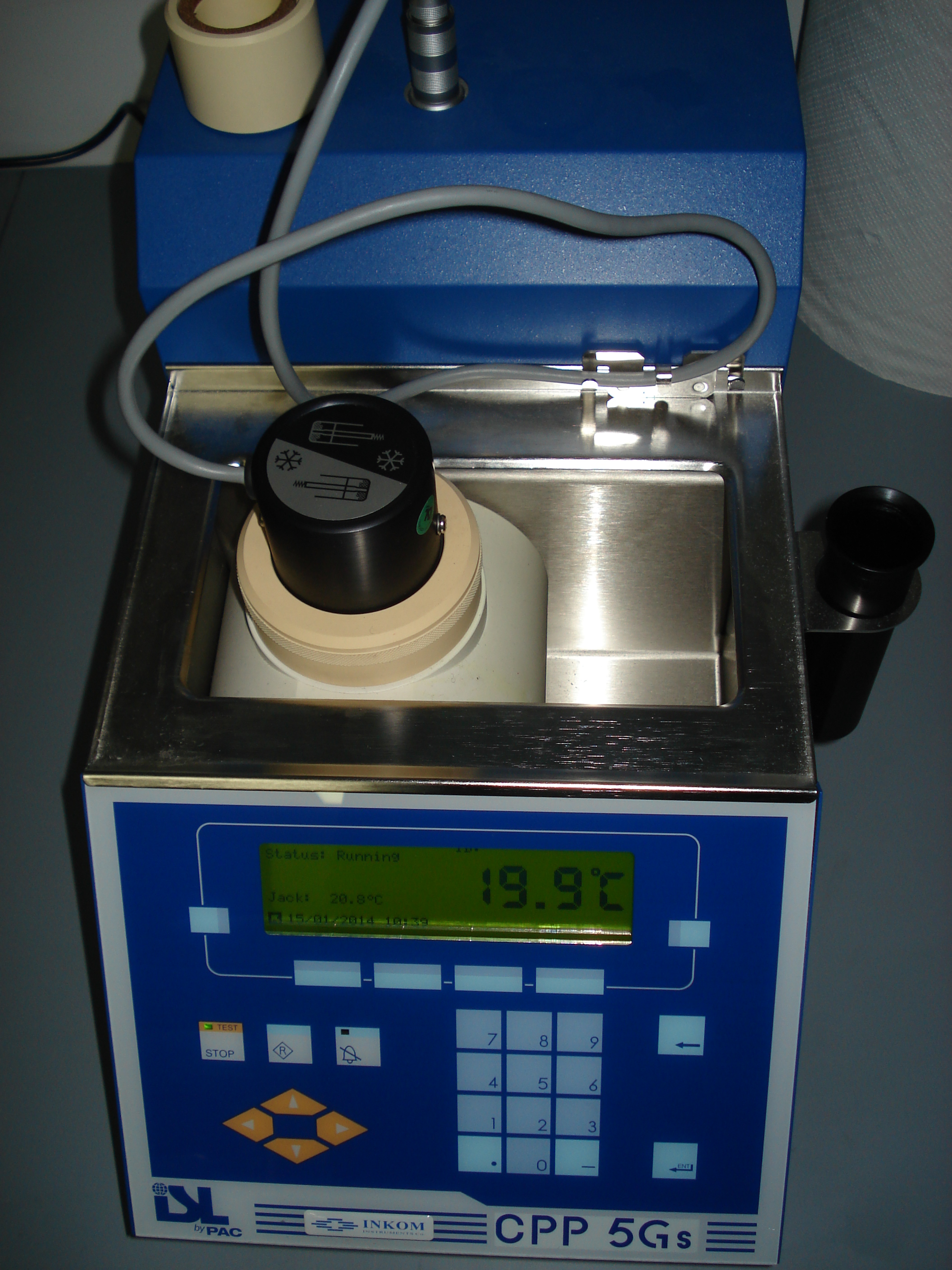Range: +10 - (-40)
Unit: 0C
Objects: liqiud fuels and biofuels, other petroleum products
This test method covers only petroleum products and biodiesel fuels that are transparent in layers 40 mm in thickness, and with a cloud point below 49 0C.
Summary of Test Method: The specimen is cooled at a specified rate and examined periodically. The temperature at which a cloud is first observed at the bottom of the test jar is recorded as the cloud point.
For petroleum products and biodiesel fuels, cloud point of a petroleum product is an index of the lowest temperature of their utility for certain applications.
For climate-dependent requirements options are given to allow for seasonal grades to be set nationally. The options are for temperate climates six CFPP (cold filter plugging point) grades and for arctic or severe winter climates five different classes (the options are for five CFPP and Cloud Point):
Table 1. Climate-related requirements – Arctic or severe winter climates according to PN-EN 590.
|
Class of Diesel |
Cloud Point, max. [0C] |
CFPP, max. [0C] |
|
0 |
-10 |
-20 |
|
1 |
-16 |
-26 |
|
2 |
-22 |
-32 |
|
3 |
-28 |
-38 |
|
4 |
-34 |
-44 |
Climate-dependent requirements for FAME being used as a blend component in PN-EN 590 diesel fuel are given
in Tables 2.
Table 2. Climate-related requirements and test methods for FAME blend component (cold flow property choices)
according to PN-EN 14214.
|
GRADE |
Cloud Point, max. [0C] |
CFPP, max. [0C] |
|
a1 |
16 |
13 |
|
b |
13 |
10 |
|
c |
9 |
5 |
|
d |
5 |
0 |
|
e |
0 |
-5 |
|
f |
-3 |
-10 |
1 only to be used in combination with FAME Grade 1 (limits of monoglyceride – max. 0,15 % m/m)






